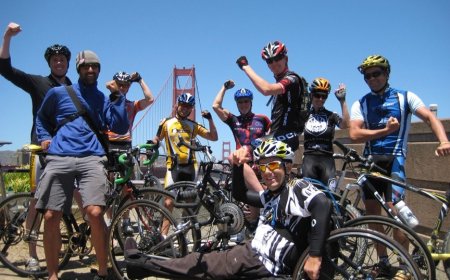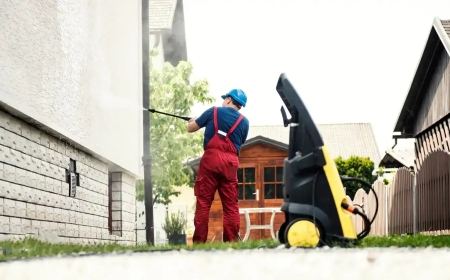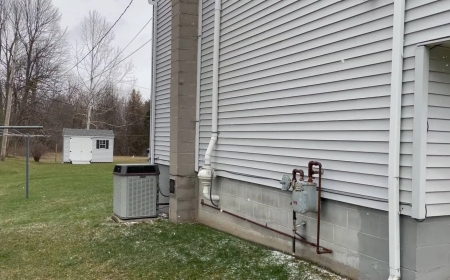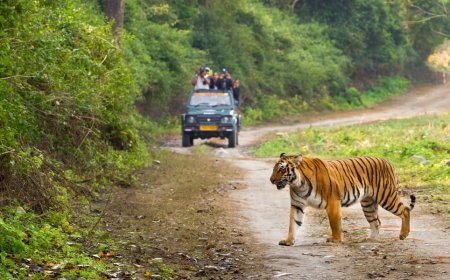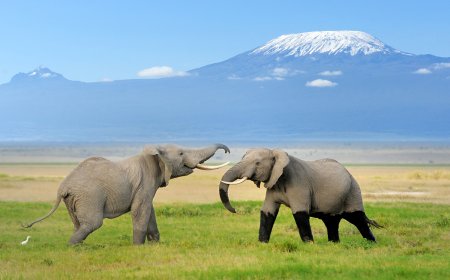How to Pack Light and Efficiently for the Everest Base Camp Trek
Walk through ancient trails and alpine forests on the Everest Base Camp Trek—Nepal’s crown jewel of treks.

Packing light for the trek to Everest Base Camp is really important for staying comfortable and moving easily. Since the terrain is tough and youll be at high altitude, taking only what you need can help keep your energy up and your focus sharp. Go for clothes that you can layerthings like moisture-wicking base layers, warm jackets, and waterproof outer layers are essential. Dont forget good hiking boots and quick-dry socks to keep your feet happy.
When it comes to gear, pick things that have multiple uses to save space. A warm sleeping bag, a reusable water bottle, and a small first aid kit are things you shouldn't skip. Keep your electronics to a minimum and keep them warm by storing them close to you. Using packing cubes or compression sacks can help you organize your clothes, making it easier to grab what you need without taking up too much room. Stick to travel-sized toiletries and avoid bulky liquids.
Make sure to pack important documents, cash, and permits in a waterproof pouch to keep them safe. You can skip too much food since there are meals available along the way. By packing smart, youll carry less weight, feel less tired, and have a better time on the trek. Packing well not only helps you physically but also makes it easier to deal with the challenges of Everest.
Why Packing Light is Important for the Everest Base Camp Trek
Packing light is super important when youre trekking to Everest Base Camp. If you're lugging around a heavy bag, youll tire out quicker, move slower, and risk getting hurt. The path can be tough, with steep climbs and bumpy ground, so every extra bit counts. When you pack light, you have more freedom to move and can handle the high-altitude challenges better. Plus, it makes life easier when you're going through teahouses and camps. By sticking to the essentials and ditching the extras, youll enjoy your trek even more.
Picking the Right Backpack for the Trek
Choosing the right backpack is crucial. A 40 to 50-liter bag is just right for the Everest trek; its big enough but wont tempt you to overpack. Look for one with adjustable straps, a comfy hip belt, and plenty of pockets to help keep your stuff organized. A waterproof cover is a good idea too, keeping your gear safe from rain and snow. When your backpack fits well, youll feel less strain on your back and shoulders, making those long days on the trail easier to handle.
Layering Up for the Weather
Layering your clothing is the best way to stay comfy in Everests changeable weather. Start with a moisture-wicking base layer to keep sweat off your skin. Then, add an insulating layer, like a fleece or down jacket, for warmth. Make sure to bring a waterproof and windproof jacket to guard against rain, snow, and wind. This way, you can adjust what you wear based on the weather and how hard youre working, keeping you dry and warm without the bulk.
Choosing the Right Footwear and Accessories
Good footwear is a must for the trek. Invest in lightweight, waterproof hiking boots that support your ankles and offer good traction on rocky paths. Bring a few pairs of quick-drying socks to avoid blisters and keep your feet healthy. Dont forget extras like a wide-brim hat, gloves, and UV-protective sunglasses to shield yourself from the sun and cold winds, ensuring you stay comfortable and safe.
Packing Efficiently to Save Space
Smart packing can help you save space and keep your backpack neat. Use packing cubes or compression bags to organize your clothes by type or day, making it easier to find things. Roll your clothes instead of folding them to save space and reduce wrinkles. Keep heavier items close to your back for better balance, and stash frequently used stuff in easy-to-reach pockets. These packing tricks not only save room but also help with weight distribution, making your trek more comfortable.
Choosing Gear That Does More Than One Thing
When packing for Everest Base Camp, pick gear that can do multiple jobs. For example, a buff works as a neck warmer, headband, or face mask. A lightweight jacket with a removable lining is great for temperature changes. Look for compact items like a collapsible water bottle or a small first aid kit. Multipurpose gear helps you save space and weight, so you can carry just what you need while being ready for different weather.
Packing Light Toiletries
Toiletries can weigh you down if you're not careful. Only bring travel-sized essentials like toothpaste, biodegradable soap, sunscreen, and SPF lip balm. Skip heavy liquids and go for solid options like bar soap and shampoo bars. Store everything in leak-proof containers within a waterproof pouch. Staying clean is important at high altitudes, but keeping your toiletries light makes your journey more comfortable.
Keeping Documents and Electronics Safe
Make sure your passport, permits, cash, and electronics are secure and easy to reach. Use a waterproof pouch or small organizer to keep these things safe from moisture and damage. Bring only what you like: a smartphone, a camera, and a power bank. Keep your devices close to your body to shield them from the cold when you're not using them. Being organized means you can quickly grab what you need without digging through your bag.
Packing Snacks for Energy
Most of your meals will be covered on the trek to Everest Base Camp, but it's smart to bring some lightweight, high-energy snacks. Think nuts, energy bars, dried fruits, and electrolyte powders to give you a boost between meals. These snacks are easy to carry and help keep your energy up on long days. Avoid heavy or perishable foods to save space. Having reliable snacks supports your nutrition and keeps you energized.
Final Packing Checklist
Before you head out, use a simple checklist to ensure you're only bringing the essentials. Go through each item and check how much it weighs, and if it can serve more than one purpose. Get rid of duplicates or anything you dontreallyl Aim to keep your daypack under 10-12 kilograms. Make sure your backpack fits well and that everything is organized for easy access. A solid packing list can reduce stress, help you avoid overpacking, and improve your trekking experience at Everest Base Camp.
How to Pack for the Everest Base Camp Trek?
When packing for the Everest Base Camp trek, its important to strike a balance between lightweight gear and must-have items. Start with layers: moisture-wicking base layers, warm mid-layers, and waterproof outer layers. Make sure you have solid hiking boots that are comfortable, along with quick-drying socks. Use packing cubes or compression sacks to keep your backpack neat. Dont forget essentials like a cold-weather sleeping bag, water purification system, and trekking poles. Keep toiletries simple with travel-sized items, and pack some snacks for energy on the trail. Also, remember to bring important documents and a first aid kit. Smart packing means you carry just what you need, keeping you comfy and nimble during the trek.
How to Physically Prepare for the Everest Base Camp Trek?
Getting physically ready for the Everest Base Camp trek is a must. Work on your cardio with running, cycling, or swimming to boost your stamina. Add strength training for your legs, core, and back to help with steep climbs and carrying a backpack. Practice hiking with a loaded pack to mimic the trek. Include flexibility and balance exercises to reduce the chance of injuries and help you on rough terrain. Gradually ramp up your training over a few months before the trek. Being well-prepared helps you deal with altitude, tiredness, and long days on the trail, making your Everest Base Camp journey safer and more enjoyable.
What Gear Do You Need to Hike Everest Base Camp?
When you hike to Everest Base Camp, you'll need some key gear. Pack layered clothing, waterproof hiking boots, a warm sleeping bag, trekking poles, and a sturdy backpack. Bring along water purification tablets or filters, a headlamp for nighttime, and sunscreen. Gadgets like a camera and a power bank are, ehn y bu keepp them protected from the cold. Dont skip personal stuff like a first aid kit, sunglasses, gloves, and a hat. Good quality gear thats durable but not heavy is important to handle tough weather and tricky trails while keeping you safe and comfy.
What Is the Best Bag for the Everest Base Camp Trek?
The best bag for the Everest Base Camp trek is usually a 40 to 50-liter backpack thats lightweight, comfy, and fits well. Look for features like adjustable padded straps, a supportive hip belt, and pockets to organize your stuff. A waterproof rain cover is a must to keep your gear dry from snow and rain. The bag should spread the weight evenly to reduce strain on long hiking days. Many trekkers also carry a smaller daypack for daily needs. Picking the right backpack can make the trek more manageable and comfortable.
Conclusion
Getting ready for the Everest Base Camp trek means smart packing, physical prep, and picking the right gear. Packing well lightens your load and keeps you comfortable, while targeted training builds the stamina and strength youll need for high-altitude hikes. Having essential and reliable gear keeps you safe and ready for mountain conditions. A good backpack can make your trek easier by balancing space and comfort. With these preparations, you can fully enjoy one of the worlds top trekking adventures while feeling safe and ready for whatever comes your way.








